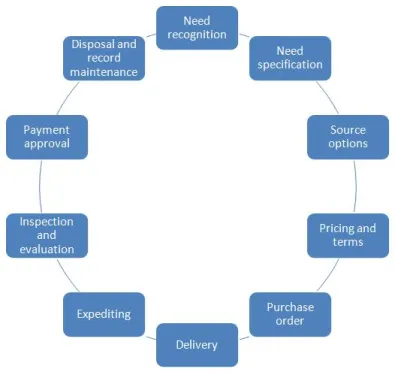Top Challenges in Purchase Order Approval and How to Overcome Them
- donnariekepro
- Aug 2, 2024
- 3 min read
In today’s fast-paced business environment, managing purchase order (PO) approvals efficiently is crucial for maintaining operational efficiency and financial control. However, many organizations face significant challenges in their PO approval processes that can impact productivity, lead to delays, and affect overall business performance. Here are the top challenges in purchase order approval and strategies to overcome them.
1. Manual and Paper-Based Processes
Challenge: Many organizations still rely on manual, paper-based processes for purchase order approvals. This can lead to delays, errors, and lost documents, creating inefficiencies and bottlenecks in the approval workflow.
Solution: Transition to a digital purchase order management system. Implementing an automated solution streamlines the approval process, reduces the risk of errors, and improves visibility into the status of purchase orders. Cloud-based platforms allow for real-time tracking and provide a centralized location for all related documents.
2. Lack of Visibility and Tracking
Challenge: Without a clear view of the approval status and process, it becomes difficult to monitor and manage purchase orders effectively. This lack of transparency can result in delays, missed approvals, and confusion.
Solution: Utilize a purchase order management system with built-in tracking and reporting features. These tools provide real-time visibility into each stage of the approval process, allowing managers to quickly identify and address any issues. Automated notifications and reminders can also help keep approvals on track.
3. Approval Bottlenecks
Challenge: Approval bottlenecks often occur when the approval process is cumbersome or involves multiple layers of authorization. This can lead to delays and impact the timely fulfillment of orders.
Solution: Simplify the approval workflow by defining clear roles and responsibilities. Implement a tiered approval process where appropriate, allowing for automatic routing based on the order’s value or type. Streamlining the process and reducing unnecessary approval layers can help eliminate bottlenecks.
4. Inconsistent Approval Criteria
Challenge: Inconsistencies in approval criteria can result in confusion and varying levels of scrutiny for similar purchase orders. This inconsistency can lead to errors, non-compliance, and disputes.
Solution: Establish and document standardized approval criteria and procedures. Ensure that all stakeholders are trained on these criteria and adhere to them consistently. Regularly review and update the criteria to reflect changes in organizational policies and compliance requirements.
5. Integration Issues
Challenge: Ineffective integration between the purchase order system and other enterprise systems (such as accounting or inventory management) can lead to discrepancies and inefficiencies.
Solution: Choose a purchase order management system that offers seamless integration with existing systems. This ensures that data is accurately transferred between systems, reducing the risk of errors and improving overall efficiency. Regularly review and test integrations to ensure they are functioning as expected.
6. Compliance and Regulatory Challenges
Challenge: Adhering to compliance and regulatory requirements can be complex, especially when dealing with diverse jurisdictions and evolving regulations.
Solution: Implement a purchase order management system with compliance features that help ensure adherence to relevant regulations. This includes tracking compliance documentation, managing approvals according to regulatory requirements, and providing audit trails for transparency.
7. Poor Communication
Challenge: Ineffective communication between departments involved in the approval process can lead to misunderstandings, delays, and inefficiencies.
Solution: Foster better communication through collaborative tools and platforms that facilitate real-time updates and feedback. Encourage open communication channels between purchasing, finance, and other relevant departments to ensure that everyone is on the same page.
8. Insufficient Training
Challenge: Inadequate training on the purchase order approval process can result in errors and inefficiencies, particularly when using new systems or technologies.
Solution: Invest in comprehensive training programs for all employees involved in the purchase order approval process. Provide ongoing support and resources to help users become proficient with the system and understand the approval procedures.
9. Security Concerns
Challenge: Managing sensitive information related to purchase orders and approvals poses security risks, especially with the increasing prevalence of cyber threats.
Solution: Ensure that your purchase order management system has robust security features, including encryption, access controls, and regular security updates. Implement best practices for data protection and conduct regular security audits to safeguard sensitive information.
10. Resistance to Change
Challenge: Resistance to adopting new technologies or changing existing processes can hinder improvements in the purchase order approval process.
Solution: Address resistance by involving key stakeholders in the decision-making process and demonstrating the benefits of new systems or changes. Provide clear communication about the reasons for the changes and offer support to help employees transition smoothly.
Conclusion
Addressing these challenges in the purchase order approval process is essential for enhancing efficiency, reducing errors, and ensuring timely fulfillment of orders. By implementing digital solutions, standardizing procedures, improving communication, and addressing security concerns, organizations can overcome common obstacles and streamline their purchase order management process. SITES WE SUPPORT
SOCIAL LINKS




Comments